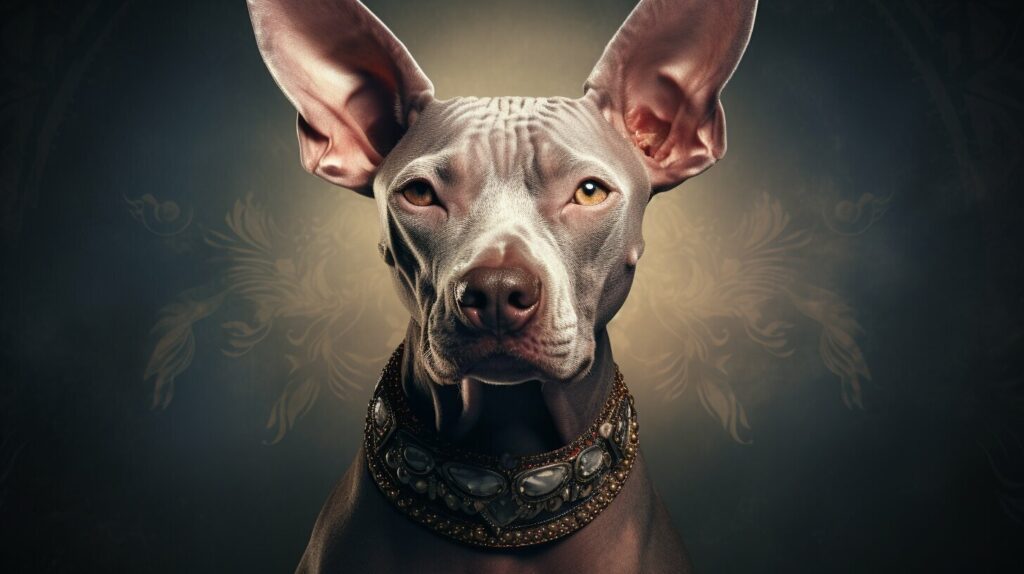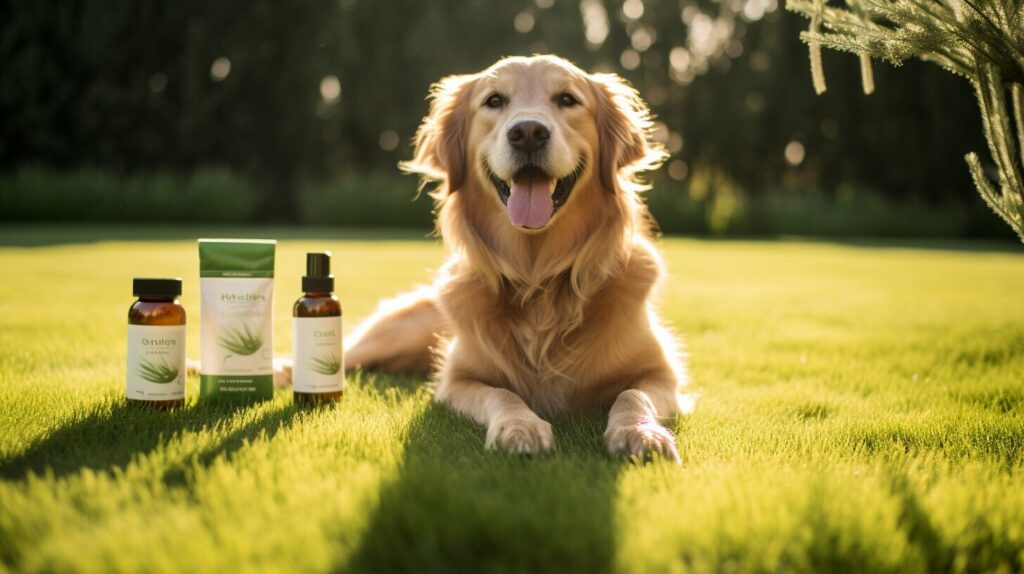Are you curious about hairless dogs? These unique breeds have captured the hearts of many dog lovers with their distinct looks and personalities. Not only are they interesting to look at, but they are also hypoallergenic, making them ideal pets for people with allergies. In this article, we will explore the world of hairless dogs, their history, unique features, popular breeds, care and grooming, health considerations, and more. Whether you are a current owner or considering adopting a hairless dog, this guide will provide you with the information you need to know.
Key Takeaways:
- Hairless dogs are a unique and hypoallergenic breed.
- This guide covers the history, unique features, popular breeds, care and grooming, health considerations, and training and socialization for hairless dogs.
- Whether you are a current owner or considering adopting a hairless dog, this guide provides valuable information to help you understand and care for these special pets.
History of Hairless Dogs
If you’re fascinated by hairless dogs, it’s worth exploring their history to understand the origins of these unique breeds. Hairless dogs, also known as “bald dogs,” have been around for centuries and are believed to have originated in Central and South America. The ancient Aztecs and Incas are known to have bred hairless dogs for both companionship and food. It’s possible that these cultures believed that the hairless trait had mystical or medicinal properties, as the dogs were also used as healers and held in high esteem.
The Xoloitzcuintli, or Mexican Hairless Dog, is one of the most well-known hairless dog breeds and has a rich history in Mexico. It was believed by the ancient Aztecs that this breed had the ability to guide the souls of the dead to the underworld. The Peruvian Inca Orchid is another hairless dog breed with roots in ancient South American civilizations and was highly valued as a companion to the Inca nobility.
Despite their long history, hairless dogs were not introduced to Europe until the 16th century, when Spanish conquistadors brought them back from their travels. Nowadays, hairless dogs are beloved pets around the world, with several different breeds recognized by major kennel clubs.
Unique Features of Hairless Dogs
One of the most obvious things that make hairless dogs special is their lack of fur. Bald dogs, as they are sometimes called, have a unique appearance that makes them stand out from other dog breeds. Their skin is exposed, and their wrinkled appearance is unlike any other dogs seen before. Unlike other hairless pets such as sphynx cats that have soft fuzz covering their skin, hairless dogs have smooth and naked skin.
As a result of not having fur, hairless dogs require extra care and attention to maintain their skin’s health. They need to be protected from the sun and cold, and their owners must be attentive to their skin care routine to prevent infections and sunburns. Additionally, hairless dogs are generally more sensitive to certain chemicals found in grooming products, so it’s essential to make sure the products used are safe for them.
While bald dogs have a unique appearance, it’s important to note that they are not the same as sphynx cats. Other than their lack of fur, they differ in many ways, including their temperament and physical features. Hairless dogs are thought to be more energetic, outgoing, and affectionate than sphynx cats. However, each breed has its quirks that make them unique.
Overall, hairless dogs are different from any other dog and offer a unique experience for pet owners looking for something out of the ordinary. The special care and attention they require may be daunting for some, but the results are certainly worth it, as they make fantastic companions and lifelong friends.
Popular Hairless Dog Breeds
There are several popular hairless dog breeds, each with their own unique charm. Here are some of the most well-known:
| Chinese Crested | Xoloitzcuintli (Mexican Hairless Dog) | Peruvian Inca Orchid |
|---|---|---|
| The Chinese Crested is a small and delicate breed that comes in two varieties: the hairless and the powderpuff. They are playful and affectionate, making them a popular choice as a family pet. | The Xoloitzcuintli, also known as the Mexican Hairless Dog, comes in three sizes: toy, miniature, and standard. They are loyal and intelligent, and make excellent watchdogs. | The Peruvian Inca Orchid, also known as the Peruvian Hairless Dog, is a medium-sized breed that is loyal and protective of their family. They are also known for their unique appearance, with their elegant and slender build. |
Other hairless dog breeds include the American Hairless Terrier, the Hairless Khala, and the Argentine Pila.
When considering a hairless dog breed, it is important to research their specific needs and temperament to ensure they are a good fit for your lifestyle. Additionally, some hairless dog breeds may require extra care and attention due to their unique characteristics.
Care and Grooming for Hairless Dogs
While hairless dogs are known for their unique appearance, they require special care to keep them healthy and comfortable. Here are some tips for hairless dog care and grooming:
Skin care
Since hairless dogs lack fur to protect their skin, it is important to keep their skin moisturized. Apply a moisturizer specifically designed for hairless dogs to prevent dryness and cracking. Regularly check their skin for any signs of redness, irritation, or infection.
Sunscreen application
Due to their lack of fur, hairless dogs are prone to sunburn. Apply a dog-specific sunscreen to prevent any burning or damage to their skin. Avoid exposing them to direct sunlight during peak hours when the sun’s rays are strongest.
Bathing frequency
Hairless dogs need regular baths to keep their skin clean and free of dirt and oil buildup. However, excessive bathing can strip their skin of natural oils, leading to dryness. It is best to bathe hairless dogs once a week to maintain their skin’s health.
Temperature regulation
Since hairless dogs lack fur, they have a harder time regulating their body temperature. Keep them warm during colder months with blankets and clothing, and ensure they have access to cool, shaded areas during warmer months to prevent overheating.
Maintaining their unique coat
While hairless dogs may not have fur, they still require maintenance to keep their skin looking healthy. Regularly exfoliate their skin with a soft brush to remove dead skin cells and stimulate new cell growth. Apply a mild shampoo and conditioner when bathing to keep their skin and coat looking smooth and healthy.
By following these hairless dog care and grooming tips, you can provide your hairless companion with the love and attention they need to thrive.
The Benefits of Owning a Hairless Dog
If you’re considering adding a new pet to your family and have allergies, a hairless dog may be the perfect fit for you. These hypoallergenic dogs don’t shed like traditional dogs, which means they produce fewer allergens. With hairless dogs, you can enjoy the companionship of a furry friend without the sneezing, itching, and other allergy symptoms.
Not only do hairless dogs make great pets for people with allergies, but they also have unique personalities and physical traits. Hairless dogs are often described as affectionate, outgoing, and intelligent. They enjoy snuggling with their owners and are known to be great with children.
If you’re interested in adopting a hairless dog, there are several organizations that can help you find the perfect companion. Some of these organizations include the American Hairless Terrier Club, the Chinese Crested Club of America, and the Xoloitzcuintli Club of America. By adopting a hairless dog, you can provide a loving home to an animal in need while also enjoying the benefits of their hypoallergenic coat.
Training and Socialization for Hairless Dogs
Training and socialization are important for all dog breeds, and hairless dogs are no exception. When it comes to training hairless dogs, it’s important to understand their breed-specific traits and tendencies.
Chinese Crested dogs, for example, are playful and affectionate but can be stubborn at times. Xoloitzcuintli dogs are intelligent and loyal but may be reserved with strangers. Peruvian Inca Orchid dogs are alert and agile but may be wary of new people and situations.
Regardless of the breed, early socialization is crucial to ensure that hairless dogs become well-adjusted and confident in various environments. Expose them to different people, animals, and settings so that they learn to adapt and feel comfortable.
Effective training methods for hairless dogs include positive reinforcement, consistency, and patience. Use rewards such as treats and praise to reinforce good behavior and avoid punishment-based training methods.
Remember that hairless dogs may have different needs than dogs with fur. For example, they may be more sensitive to cold or sun exposure, so it’s important to provide appropriate protection and regulate their temperature.
Health Considerations for Hairless Dogs
While hairless dogs are generally healthy breeds, they may face some unique health issues. It’s important to be aware of these considerations and provide proper care for your furry friend.
Skin Problems
Due to their lack of fur, hairless dogs are more susceptible to skin problems such as sunburn, rashes, and acne. Regular skin care is crucial for their health and comfort. It’s recommended to apply sunscreen to your hairless dog’s skin when they are outside and to bathe them regularly to prevent clogged pores. Consult with your veterinarian if you notice any unusual skin issues.
Dental Care
Many hairless dog breeds are prone to dental problems. It’s important to establish a regular dental care routine for your pet and to visit the veterinarian for check-ups. Provide dental chews or toys to promote healthy teeth and gums.
Veterinary Check-ups
Regular check-ups with a veterinarian are essential for the health of your hairless dog. This is especially important for hairless breeds, as they may have different health concerns than other dogs. Schedule regular check-ups and vaccinations, and discuss any concerns you may have with your veterinarian.
By providing proper care and attention, hairless dogs can live happy and healthy lives. Understanding their unique health considerations and addressing them promptly can help ensure a long and happy life for your furry friend.
Conclusion
Now that you know more about the unique world of hairless dogs, you can make an informed decision about whether one of these breeds is right for you. Remember that they are hypoallergenic, making them a great option for those with allergies, but they do require special care and attention to keep their skin healthy.
If you decide a hairless dog is the right fit for your family, be sure to do your research on specific breeds and their care needs. You can often find hairless dogs available for adoption through rescue organizations or reputable breeders.
Overall, owning a hairless dog can be a rewarding experience, providing companionship and love for many years to come.
FAQ
Q: Are hairless dogs completely bald?
A: No, hairless dogs have some degree of hair, although it is minimal and often limited to certain areas such as the head, paws, and tail.
Q: Do hairless dogs require special skincare?
A: Yes, hairless dogs require regular skincare to keep their exposed skin healthy. This includes moisturizing to prevent dryness and applying sunscreen to protect from sun damage.
Q: Are hairless dogs hypoallergenic?
A: Yes, hairless dogs are considered hypoallergenic because they produce less dander and shed less hair, making them a suitable option for people with allergies.
Q: How often should I bathe a hairless dog?
A: Hairless dogs should be bathed at least once a week to keep their skin clean and free from dirt, oils, and debris.
Q: Are hairless dogs more prone to skin problems?
A: Yes, hairless dogs are more prone to skin problems due to their exposed skin. They may experience dryness, sunburn, and skin infections if proper care is not taken.



